My sit spot is located in Copperhill on some land that my family owns. It is a secluded part of the forest on this land. My exact coordinates are 37.1087, -80.1430. The group of ferns that are to my left (105º E) are much fewer in number than last time I was here. Some of them appear to have become dried out and are turning a brownish-red color. The moss that is on the exposed tree root has begun to expand its reach. There is some more moss developing almost two inches away from the previous growth. I noticed that the moss starts from within the bark’s grooves. My spider companion is still hanging out on its web. It wasn’t eating this time, but it does appear to have grown a little larger. It doesn’t seem to have much energy just bobbing in the wind as it swirls around us. I really can’t blame it though the air up here is almost twenty degrees cooler than last time. The pile of leaves I’ve been watching has zero activity. It’s just cold moist decaying leaves. Most of the insect ground life is probably staying warm elsewhere.
I went over to the group of pine saplings that are a few yards to my right (300º NW). I elected to check on them because they seemed to have doubled in size since the last time I was there. Walking around and through them was a little difficult because of how close together they were, but there had to be at least thirty there, easy. Most of themwere up to my waist or lower, but there was one that was as tall as I am (which might not be saying much) and another that was taller by a few inches. Next I went over to investigate my ferns. As I got closer, I realized that they were dying from the ground up. The brown starts from the base of the stem and slowly creeps up killing off the leaves as it moves. The interesting thing was that the top and would end up breaking off dying before the middle experienced anything too server. If I didn’t move closer to the ferns to get a closer look at what was happening to them, I would just have seen that they were wilting and dying, but not understanding where it was starting/coming from. If I didn’t check on the pines, I never would have felt so tall and then so short.
It was a little noise walking around my site because of all of the dried-out leaves covering the ground, so I felt like I was disturbing the environment at first. As I moved away from the covered area and more towards the pines where less leaves were it was peaceful and open. I realized how much coverage I experience in my sit spot. At the pines and the ferns, I could look up and see the sky through the tree limbs. I would have ended up exploring the pines at least because passed them is the long way back which I ended up taking in hopes of seeing any buck signs. I ended up walking up on a group of three I didn’t get to see the first one’s head, but at least one of them was a doe, the other one could have been a button buck.
The pines’ adaptation is how close together they grow. This is generally called a thicket and these thickets help the trees retain some heat (this is very important when a harsh winter hits). The ferns’ adaptation is how some their leaves are. As we discussed in class the ferns’ small leaves which minimalizes the amount of water that evaporates. My moss on the tree root adaptation is its choice of growth location. This “behavior” in which it grows within the grooves of the bark allows it to cling on to the tree and not be removed so easily whether by wildlife or weather.
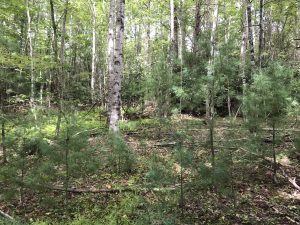


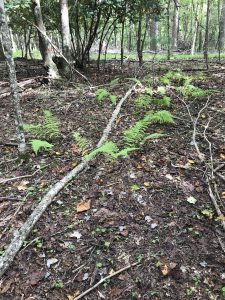
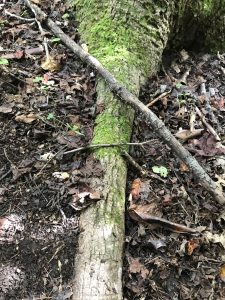
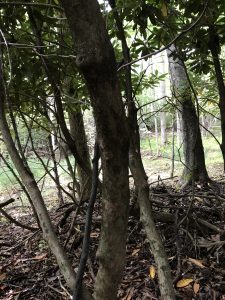
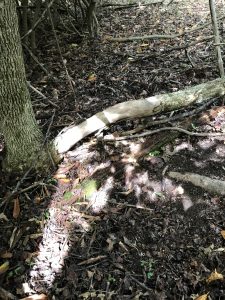

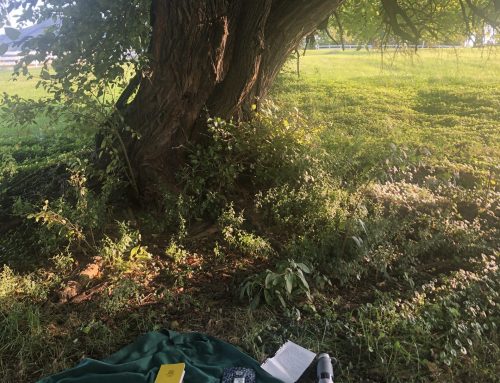
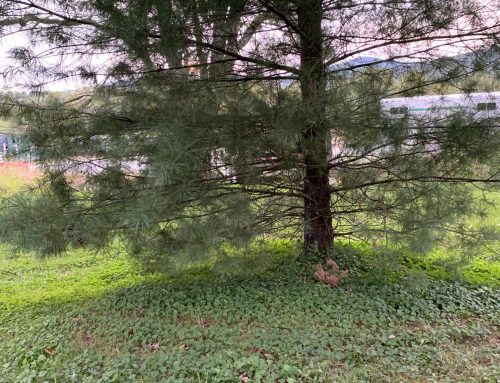
I love your pictures! You are very descriptive of your surroundings and it’s awesome that you have been able to experience so much growth in such a short period of time with the pine saplings. Hopefully, they’ll keep growing exponentially in the coming months!